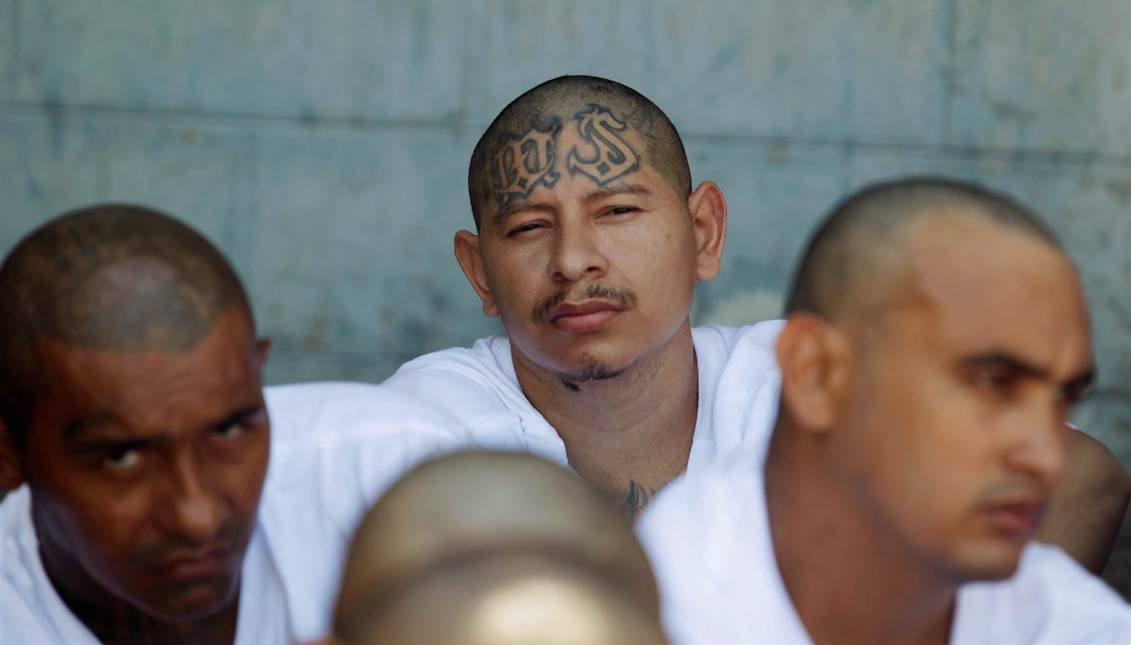
A brief history of MS-13
Thanks to President Trump’s racist rhetoric, the media's focus has returned to the well-known international criminal organization known as MS-13, or Mara…
On Tuesday, President Donald Trump boasted of his strong anti-immigration stance and called the leader of the Democratic minority, Nancy Pelosi, an "MS-13 lover."
This isn’t the first time that the president has directly connected immigration with criminal organizations as an excuse for his demand for a border wall, as well as the radicalization of the persecution and deportation strategies against immigrant communities.
But, what exactly is MS-13?
Since the end of the 1970s, El Salvador was harassed by a deep social and internal political crisis, led by two cruel factions: the Armed Forces of El Salvador (FAES) and the insurgent forces of the Farabundo Martí Front for National Liberation (FMLN)
Although El Salvador had struggled to maintain social stability since its independence from Spain at the beginning of the 19th century, it was the arrival in power of General Maximiliano Hernández Martínez that resulted in more than three decades of deep dictatorial military control in the hands of Colonels Óscar Osorio and José María Lemus.
During the 70s, the social discontent exploded and facilitated the sprouting of radical groups close to the Salvadoran Communist Party (1930).
Organizations such as The People's Revolutionary Army (ERP), the “Group” and finally the National Opposition Union, managed to carry out elections through social pressure, where the government's candidate, Colonel Arturo Armando Molina, eventually won.
It was the denunciations of fraud and the attempted coup d'état by a group of young soldiers that radicalized both the forces of guerrilla organizations and the military hand of the government.
Paramilitarism and the confrontation of organizations such as the FPL, the People's Revolutionary Army, the National Resistance and the Communist Party itself have been perceived as collateral of the Cold War, especially because of the interference of the Soviet Union in Latin American politics and for the founding of the School of the Americas by the United States, which allowed the training of military leaders in governments of the region to "counteract" the insurgency of communism.
More than 75,000 people died from the armed conflict, and it is estimated that 500,000 Salvadorans fled the country and mostly settled in the U.S. state of California, establishing there the first attempts of immigrant organizations.
Young people trained by the guerrillas to form part of the Farabundo Martí National Liberation Front were frequently called "Salvatruchas," and that is the etymology of a term that still causes panic among those who know its history.
It was these Salvadoran immigrants who settled in the vicinity of the Pico-Union neighborhood in Los Angeles in the early 1980s and organized to "protect" their fellow citizens upon arrival in the territory, especially against the aggressions of other previously established gangs integrated by Mexicans and African-Americans.
As the journalist, Héctor Silva Avalos recalls, at that time it was "more of a social than criminal group of teenagers who gathered around a shared taste for rock music and marijuana."
It was the stigmatization and the "massive incarceration and deportation," which turned this group of rebellious teenagers into one of the most dangerous criminal organizations in the world.
Once democracy was reestablished in El Salvador, and thanks to reforms in California’s judiciary system in the early 1990s, the U.S. government proceeded to deport all the criminals belonging to the now-called MS-13 (Mara Salvatrucha, and 13 for the position of the letter M in the alphabet).
The Illegal Immigration Reform and Immigrant Responsibility Act, approved in 1996, allowed for mass deportations and the removal of any status of legality to individuals found guilty of criminal charges.
As Vox explained, "By the turn of the 21st century, gang members were an American export.”
RELATED CONTENT
According to data from insightcrime.org, around 20,000 criminals were sent back to El Salvador between 2000 and 2004. Those who had left as immigrants now returned to a "developing" country as gang members.
The legal mechanisms of the Central American country were radicalized and the mass incarceration only led to the saturation of the penal system, which was forced to release 84 percent of the detainees in the end.
Instead of remaining in their native country, these immigrants managed to establish a new international crime network, creating cells in the northern triangle of Central America, and disseminating their activities to troubled areas such as northern Mexico, where their associations with drug cartels as the Sinaloa Cartel allowed them not only access to more resources but also a way to traffic people to feed their cells in U.S. territory.
The governments of George W. Bush and Barack Obama tried to contain the criminal activities within the U.S., but the damage was done.
Having emerged as a group of teenagers, the symbolism of the MS-13 merged religious elements (crosses, rosaries), countercultural elements of the time (tattoos) and a deep fondness for rock music.
But its survival and growth were founded by the economic organization around drug trafficking and extortion, as well as the exchange of favors with other criminal organizations.
These favors are frequently the murder and disappearance of individuals, in addition to sending of messages to governments through the massacre of minors and women in urban areas.
Many of the conscripts of MS-13 are young people between 12 and 21-years-old who, thanks to the economic and social circumstances of their countries of origin, try to emerge in a nation where stigma is stronger than will.
During 2014, the crisis on the border was difficult to contain, especially due to the number of undocumented minors who tried to reach the other side unaccompanied.
Between 2012 and 2017, around 260,000 unaccompanied minors arrived in the United States, many of them fleeing the violence established in their countries by gangs such as MS-13. But it is precisely their transit across the border that makes them more vulnerable to becoming part of them.
With the stigmatization coming from the White House, the verbal persecution established by Trump and the new measures such as the separation of families when crossing the border, MS-13 will not only remain intact but will become a multi-headed monster harder to defeat.











LEAVE A COMMENT:
Join the discussion! Leave a comment.